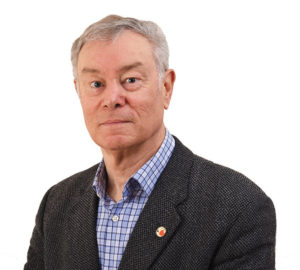Over the last year, a series of controversial provincial decisions affecting the City of Toronto’s council size, budget, land use planning, and transit system have reminded us of the power provinces wield over municipalities. We are told the constitution mandates that “municipalities are the creatures of the province.” To many in Toronto this idea seems more and more an anachronism as our city is growing rapidly, but without the power a large city needs to govern.
Enter the notion of “Toronto as a Charter City,” which has gathered steam as an alternative for those opposing the province’s disproportionate rule over our city. The idea, propelled by a grassroots organization called Empower TO, has gained the support of City Council. At the November 28, 2019 City Council session, the campaign to establish a City Charter took an important step forward when Council overwhelmingly supported Councillor Matlow’s motion for the City Manager to study officially what a charter might look like and, just as importantly, the path forward to implement one. Recent endorsements by Federal MP Adam Vaughan and Ontario MPP and Liberal leadership candidate Michael Coteau have provided additional momentum towards the goal of more autonomy for Toronto.
Advocates claim that a City Charter would help address a long history of events dating back at least a quarter century, including recent provincial meddling in Toronto’s municipal election, and unilateral provincial changes to City-approved land use plans by the current government, and the denial of the City’s request to enact highway tolls by the previous government, that have clearly demonstrated that Toronto does not have the powers to fulfill the basic functions residents expect.
How to take stock of the changes?
The loss of democratic representation over the past 25 years is huge. Take Leaside, which was formerly an independent municipality. In 1997, Leaside was part of the Borough of East York and was represented by two (part-time) councillors and one part-timer on Metro Council. Today Leaside is part of Don Valley West, with just one councillor for a ward with a population of 110,000 and three or four times the area of Leaside. Even earlier, Leaside was incorporated as the Town of Leaside in 1913, and in 1967 had a council of six councillors plus a mayor before it was amalgamated with the Township of East York to form the Borough of East York.
Meanwhile, the level of democratic representation in Toronto today bears no relation to that in other parts of the province. MPP Todd Smith, Quinte West has more than 30 councillors in his Bay of Quinte riding of approximately 110,000 while Don Valley West has one councillor for roughly the same population!
The fundamental concern is that Toronto is left with a massive “democratic deficit,” thanks to a combination of its (post-amalgamation) single layer structure and its high population to representative ratio, when compared with other major cities in North America.
Is a Leaside Council the answer?
What can Leaside do about this? As Glenn Asano suggested in his column in Leaside Life in August 2019, we can establish a Leaside council. And we are. The basic structure proposed for the “Leaside Town Council” is to include representatives of the Leaside organizations with an interest in “civic matters” such as the Leaside Residents Association (formerly Leaside Property Owners’ Association), the Leaside Business Park Association, the Bayview-Leaside BIA, the school trustees, and of course the City councillor. As several of the matters discussed would be directed to the councillor, there is a question as to whether Jaye Robinson would be a full member or ex-officio. The MPP and MP would be invited, likely as ex-officio members. The first meeting, held on Dec. 9, 2019 at the Leaside Gardens, confirmed the interest and established a basic structure.
What should be on the council’s agenda? We’d love to hear from you on this, but the major Eglinton developments (Bayview, Laird and Brentcliffe), which will change Leaside for generations to come, their impacts, and community benefits, are obvious topics.
Finally, we need to remind ourselves that we are part of Toronto. More than ever, the success of Ontario (and Canada) is dependent on the success of Toronto. When the province behaves in an arbitrary way, it is ultimately hurting itself.


